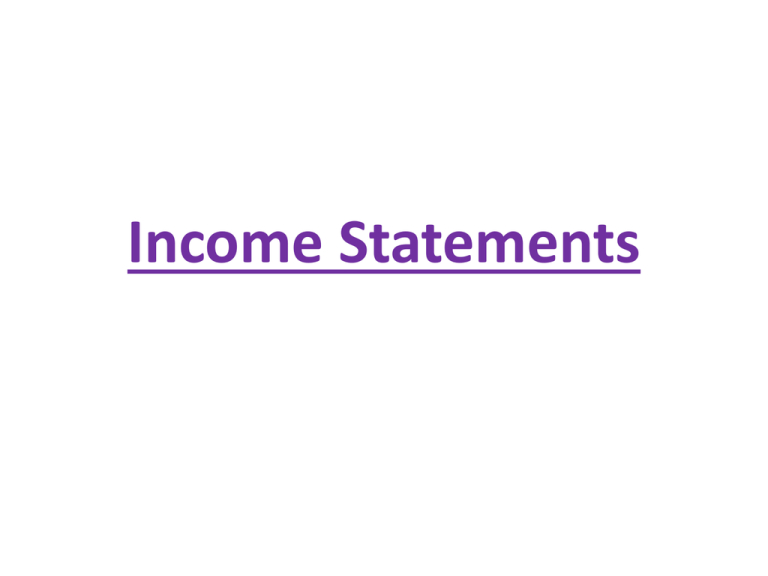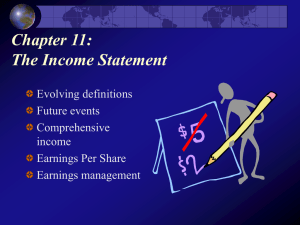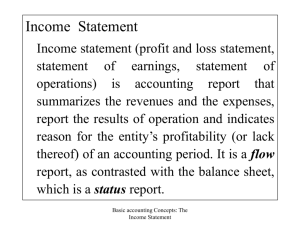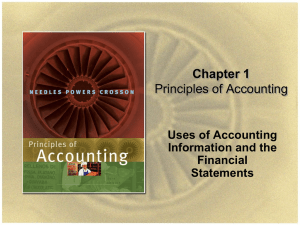Income Statements Income Statement
advertisement

Income Statements Income Statement • One of four financial statements issued by a business • Reports the amount a company has earned between 2 balance sheet dates. Income Statement • Income statements cover a time of 1 year but do not have to begin Jan 1st. • If the statement is for less than a year it is called an interim financial statement. A.K.A. • • • • • • Statement of operations Statement of income Statement of earnings Results of operations Profit and loss P&L Reported Items • The following are items reported on an income statement – Revenues – Expenses – Gains – Losses – Discontinued operations – Extraordinary items – Earnings per share on stock market Rules • There are specific rules which must be followed when creating a company’s income statement which are set by the government. • In the USA it is called GAAP Accrual Method • The GAAP requires companies to use the Accrual method of accounting – Assets and liabilities are reported when the transaction occurs not when the money is paid or received. Revenue • Revenue is income that a company receives from its normal business activities, usually from the sale of goods and services to customers. • Types of revenue on income statements – Operating revenue – Nonoperating revenue Revenue • Operating revenues pertain to a corporation’s main activities. – Retail: sale of merchandise – Corporation: fees for service – Bank: interest on loans • Nonoperating revenues result from secondary activities. – Earning money from a source other than main activity of the company. Cost Principle • The cost principle requires that the expenses reported on the income statement be the actual costs based on previous transactions. As a result, the expenses reported on the income statement are often less than the expenses based on the current costs. Expenses vs Revenue • The goal of an income statement is to measure a company’s earnings during a period of time. – To do this, accountants must match expenses with revenues. • ex: This month’s cost of goods must be matched with this months sales of goods. Gross Profit • Generally, the sales revenues and the cost of goods sold are the 2 largest amounts reported on the income statement. • The difference between these two amounts is known as the gross profit or gross margin Sales – Cost of goods sold = Gross profit Gross Profit • The gross profit percentage should be monitored to be certain that the selling prices are being adjusted when the costs of goods purchased is increasing. • The dollar amount of gross profit must be sufficient to cover the many other expenses such as: rent, utilities, advertising, maintenance, interest, etc. Earnings per Share • When a company’s stock is traded, the income statement must also report the net income as an amount per share of common stock (earnings per share). Internal Income Statements • Internal income statements are more detailed statements which are prepared and distributed ONLY to people within the company. – These can be useful to compare sales of different stores owned by the same company.











